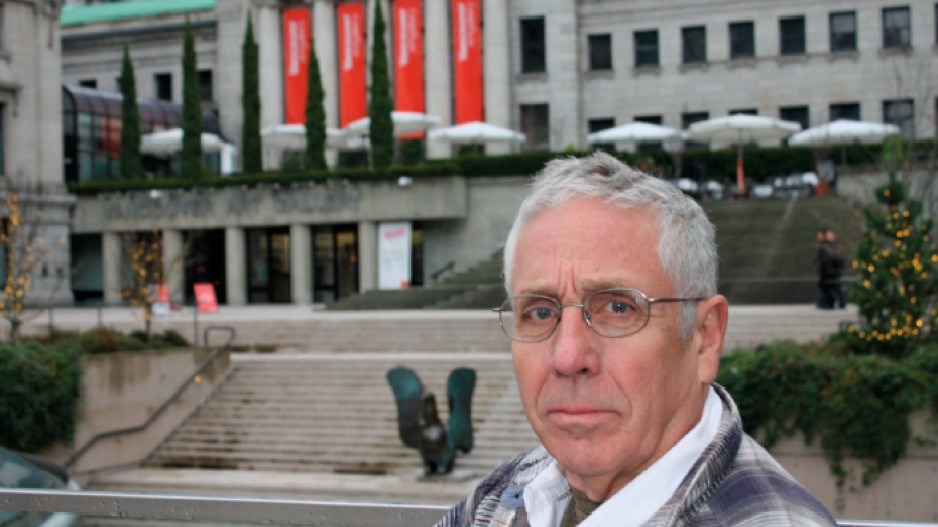Prominent Vancouverites believe there is a better way to expand the Vancouver Art Gallery (VAG) than its current plan to build a $300 million, 300,000-square-foot structure at Larwill Park.
Their proposal uses the City of Vancouver’s Community Amenity Contribution (CAC) system to help create a network of up to seven themed art galleries, including a renovation of the current space – all for $150 million, which includes $25 million for new acquisitions.
“You can buy a lot of great art with that price difference,” said Urban Futures Institute senior adviser David Baxter – who, along with Rennie Marketing Systems owner Bob Rennie, wrote a proposal in early December and sent copies to VAG board members, Mayor Gregor Robertson, Premier Christy Clark and others.
Given the Vancouver Playhouse Theatre Co.’s demise earlier this year and ongoing pleas from arts organizations for more funding, Baxter believes that both government grants and corporate donations earmarked to support the arts should be spread around instead of being funnelled into a single new art gallery.
The proposal for multiple galleries comes in the lead-up to February 1, when VAG executives have committed to provide city council with a business case for building a gallery at the three-acre, city-owned Larwill Park, bounded by Cambie, Dunsmuir, Beatty and Georgia streets.
City council agreed last February to reserve the site for two years for potential VAG use.
VAG executives contracted Toronto-based Lord Cultural Resources (LCR) to write a report commenting on Baxter and Rennie’s proposal.
LCR, which bills itself as the world’s largest museum planning firm, called the proposal “impractical” in its December 12 report. But Rennie told Business in Vancouver December 24 that the report was a “hatchet job” and not a thoughtful critique of his proposal.
He said the gallery could save money by storing art in East Vancouver, where rent is cheaper, instead of in the basement of the current art gallery building.
That would also free up space for a 40,000-square-foot gallery of conceptual photography featuring art from world famous Vancouver photographers such as Jeff Wall.
“If I’m in Chicago and I want to donate a Jeff Wall or a Stan Douglas [photograph], I don’t think of the VAG,” said Rennie.
Rennie’s extensive personal art collection includes his own gallery in Chinatown’s Wing Sang Building, as well as pieces of art that are on loan to galleries such as Musée National d’Art Moderne in Paris, Europe’s largest museum of modern art.
“Why couldn’t VAG claim conceptual photography as a core competency?” Rennie asked.
He would like to see VAG spawn galleries themed to feature, among other niches:
•Group of Seven and Emily Carr;
•a museum of contemporary Asian art; and
•contemporary art.
A museum of aboriginal art could also be created, Rennie said, only if other facilities are deemed unsuitable.
The University of British Columbia’s Museum of Anthropology features First Nation art, and philanthropist Michael Audain announced plans in October to create an art gallery in Whistler that will include aboriginal art.
Rennie added that building multiple galleries on separate sites during the next 15 years will also open up a steady stream of corporate naming opportunities.
The galleries could be placed in new office or residential developments using the city’s CAC program to solicit in-kind or cash contributions from developers.
But the LCR report asked why commercial developers “should give up valuable space for a community art gallery of 12,000 square feet when the rental income capable of being paid by [VAG] will be marginal.”
Rennie and Baxter say that reveals ignorance of the City of Vancouver’s sophisticated system of extracting community benefits from developers.
They argue that the city would be able to give developers additional on-site density to compensate for providing gallery space.
VAG executive director Kathleen Bartels was unavailable for comment, but earlier this year she told BIV that a large purpose-built gallery facility is required because:
•floors could be made extra-strong to support heavy pieces;
•it would make moving exhibits easier and allow the gallery to host large collections; and
•it would enable the gallery to boost attendance and show a larger percentage of its works at any one time.




